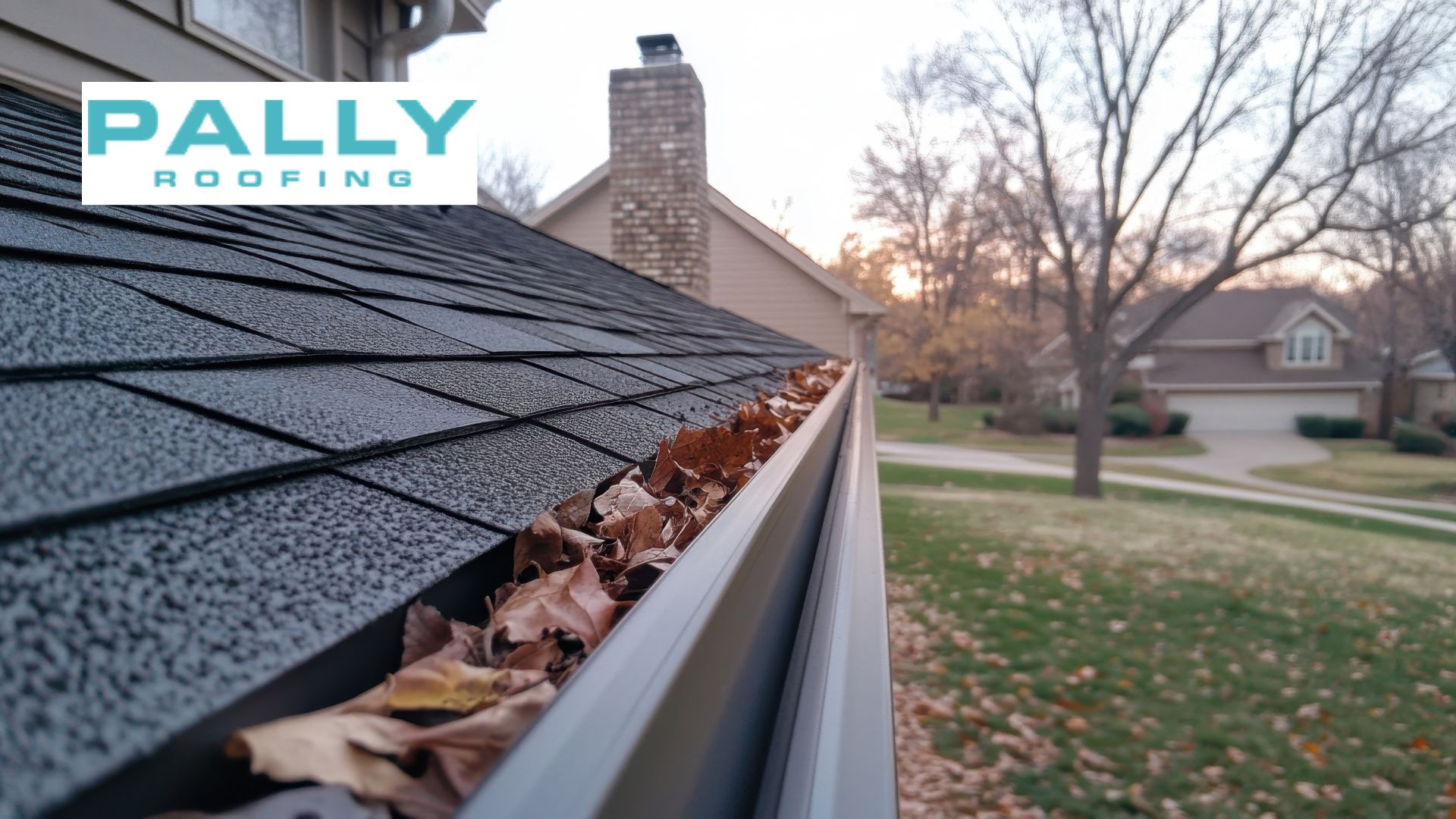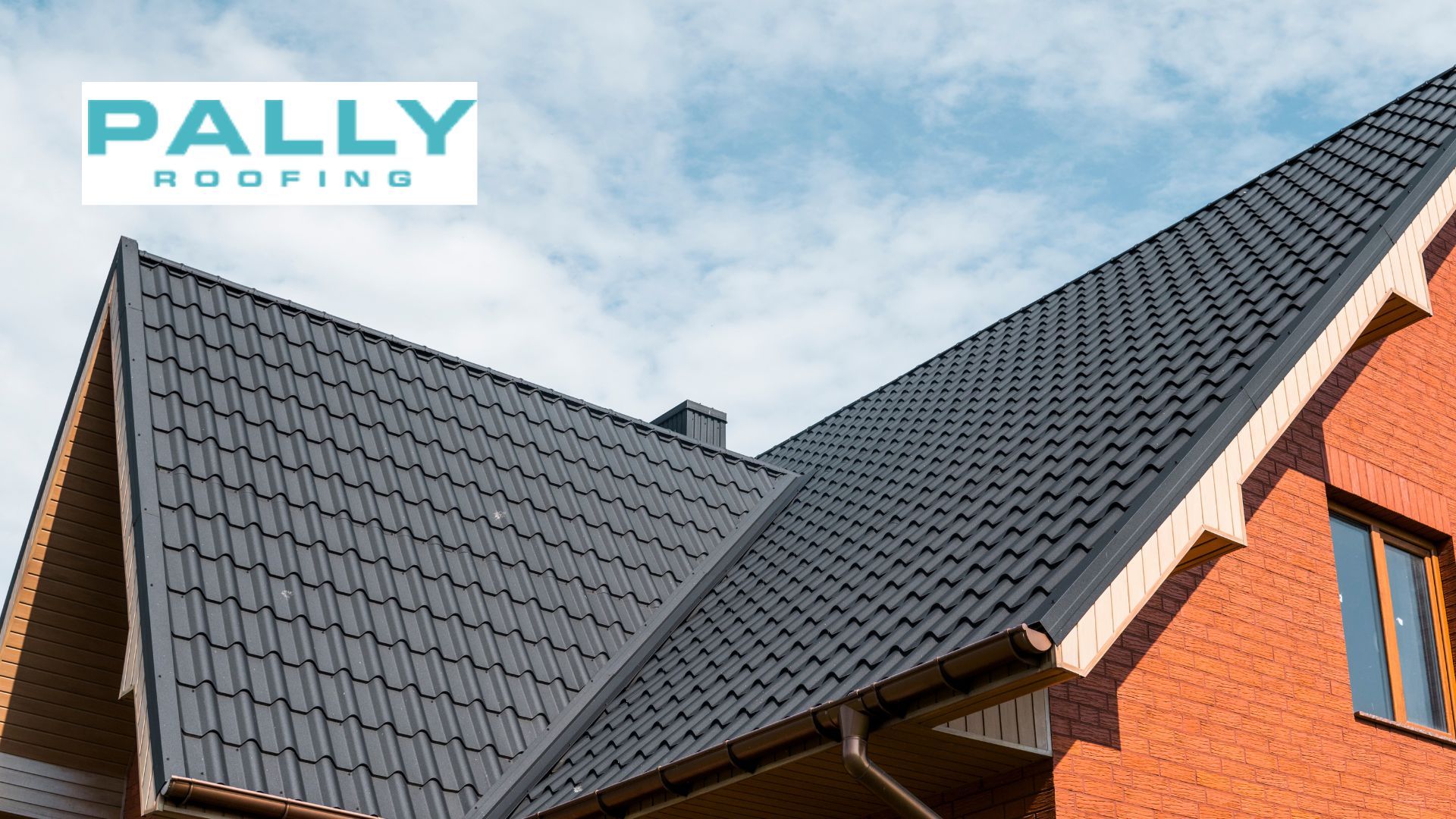Last updated on August 28th, 2024 at 09:27 am
Living in an area with heavy rainfall requires careful consideration when choosing a roof. The constant exposure to moisture can wear down even the sturdiest materials, leading to leaks, structural damage, and costly repairs. This is where tile roofing emerges as a strong contender, offering durability, resistance to harsh weather, and a variety of styles to suit any architectural vision.
Table of Contents
Living in a heavy rain area requires a roof that can withstand the elements. That’s where Pally Roofing, your trusted local roofing experts, come in. We specialize in providing high-quality tile roof installation, replacement, and repair services.
Tile Roofing in Heavy Rain Areas. A Symphony of Styles and Materials
Tile roofs are not a monolithic entity. They come in a variety of styles and materials, each with its unique aesthetic and performance characteristics. Here are some popular options:
- Concrete tile roofing: Known for its durability, fire resistance, and longevity, concrete tile is a popular choice in areas prone to heavy rain and sun exposure. The weight of concrete tiles, however, requires a sturdy roof structure.
- Clay tile roofing: Offering a classic, Mediterranean aesthetic, clay tiles are naturally water-resistant and provide excellent insulation against heat and humidity. However, they can be susceptible to cracking in extreme weather conditions.
- Slate tile roofing: While technically not a tile, slate roofing is often included in discussions due to its similar properties. Slate is incredibly durable and weather-resistant, offering a timeless elegance to your home. However, it is also the most expensive option on this list.
These are just a few examples, and other options like metal tile roofing and composite tile roofing also exist, each offering various benefits and considerations.
Beyond aesthetics, tile roofs come in a wide range of colors and textures. This allows you to personalize your home’s exterior and achieve the desired visual impact. From the classic terracotta hues of clay tiles to the sleek modern look of metal tiles, the possibilities are endless.
Pally Roofing offers a variety of tile roofing styles and materials, including concrete, clay, and even metal tile options, to match your specific needs and aesthetic preferences.
A Fortress Against the Elements
Beyond aesthetics, the true strength of tile roofing lies in its durability and resistance to harsh weather. Here’s how it shines:
- Lifespan: Tile roofs can last for decades, often exceeding 50 years with proper maintenance. This translates to significant savings compared to frequently replacing less durable roofing materials.
- Water resistance: The naturally impervious nature of tile sheds water effectively, preventing leaks and protecting your home from water damage. This is crucial in areas with heavy rainfall, where prolonged exposure to moisture can lead to interior leaks, mold growth, and structural damage.
- Fire resistance: Both concrete and clay tiles are fire-resistant, offering an extra layer of protection in case of fire hazards. This is a significant benefit, especially in areas prone to wildfires or with strict fire safety regulations.
- Wind resistance: The weight and interlocking nature of tiles provide excellent wind resistance, crucial for areas prone to storms and strong winds. This ensures your roof stays firmly in place, even during the harshest weather conditions.
Furthermore, tile roofs offer several additional benefits:
- Energy efficiency: The thermal mass of tile helps to regulate indoor temperatures, reducing energy consumption for cooling and heating.
- Low maintenance: While periodic inspections and cleaning are recommended, tile roofs generally require minimal maintenance compared to other roofing materials.
- Increased home value: The durability and aesthetic appeal of tile roofs can add value to your home, making it a worthwhile investment.
However, it’s important to acknowledge that tile roofs also come with some drawbacks:
- Higher initial cost: Compared to other roofing materials like asphalt shingles, tile roofs have a higher initial cost due to the material and installation expertise required.
- Weight considerations: The significant weight of tile roofs requires a sturdy roof structure to support it. This might involve additional structural reinforcement, especially for older homes.
- Susceptibility to damage: While generally durable, tile roofs can be susceptible to cracking from hail or extreme temperature fluctuations.
Now, let’s delve deeper into the practical aspects of tile roofing.
Weight Considerations for Your Roof Structure
The significant weight of tile roofs is a crucial factor to consider. Here’s why it matters:
- Structural integrity: A roof structure needs to be able to support the weight of the roofing material over the long term. This includes the weight of the tiles themselves, as well as the underlying support system (battens, underlayment, etc.).
- Reinforcement requirements: For existing homes, especially those with older roof structures, additional reinforcement might be necessary to handle the added weight of tile roofing. This can involve strengthening trusses, adding support beams, or even upgrading the entire roof system.
- Building code compliance: Local building codes typically have specific weight limitations for roofs. It’s essential to consult with a structural engineer and obtain the necessary permits before installing tile roofing, ensuring compliance with local regulations.
To help you visualize the weight differences, consider the following table:
Please note: These are approximate values and can vary depending on the specific material, thickness, and manufacturer. It’s crucial to consult with a roofing professional and structural engineer to determine the exact weight of your chosen tile and assess your roof’s capacity.
Not sure if your roof can handle the weight of tile? Our team of experienced professionals can assess your existing roof structure and recommend the best course of action, including any necessary reinforcement work.
Installation Expertise and Potential Costs
While tile roofs offer numerous benefits, their installation requires specialized expertise. Here’s what you need to know:
- Skills and experience: Installing tile roofs requires specific knowledge and experience with the materials and proper installation techniques. Improper installation can lead to leaks, structural problems, and other costly issues.
- Hiring qualified professionals: It’s highly recommended to hire licensed and insured roofing contractors with experience in installing tile roofs. They possess the necessary skills, tools, and safety equipment to ensure a proper and safe installation.
- Cost considerations: Due to the specialized skills required, tile roof installation costs are generally higher than other roofing materials. However, the long lifespan and minimal maintenance needs of tile roofs can offset these initial costs over time.
Here’s a brief comparison of potential costs:
Please note: These are estimated costs and can vary significantly depending on your location, the complexity of your roof, chosen materials, and labor rates. It’s essential to obtain quotes from multiple qualified roofing contractors for a more accurate estimate.
Concerned about the cost? Pally Roofing provides transparent pricing and competitive rates for all our services. We also offer financing options to help make your dream roof a reality.
Making an Informed Decision
Choosing the right roof for your home is a significant investment. While tile roofing offers many advantages in terms of durability, weather resistance, and aesthetics, it’s crucial to weigh the pros and cons carefully before making a decision. Here are some key considerations:
- Climate: If you live in an area with heavy rainfall, tile roofing’s excellent water resistance makes it a compelling choice.
- Budget: Be prepared for the higher initial cost associated with tile roofing and installation.
- Roof structure: Ensure your existing roof structure can handle the weight of tile, or factor in potential reinforcement costs.
- Maintenance: While low-maintenance, regular inspections and cleaning are still necessary for tile roofs.
- Aesthetics: Consider how the style and color of the chosen tile will complement your home’s architecture and desired aesthetic.
Ultimately, the decision to use tile roofing should be based on your specific needs, budget, and aesthetic preferences. By carefully considering the factors discussed in this blog post, you can make an informed decision and invest in a roof that will protect your home for decades to come.
Ready to explore the possibilities of tile roofing for your home? Contact Pally Roofing today for a free consultation and estimate.
For a comprehensive exploration of different roofing options for heavy rainfall areas, head over to our insightful blog post:
Best Roofing Options for Heavy Rainfalls: Protecting Your Home in Any Downpour
Author
-

With more than 16 years of hands-on experience, Phillip Schmucker is the knowledgeable owner of Pally Roofing. His dedication to superior roofing services has earned him a reputable place in the industry. Phillip also shares his extensive expertise through writing, providing readers with practical tips and professional advice on various roofing topics. Follow him on LinkedIn.
View all posts






